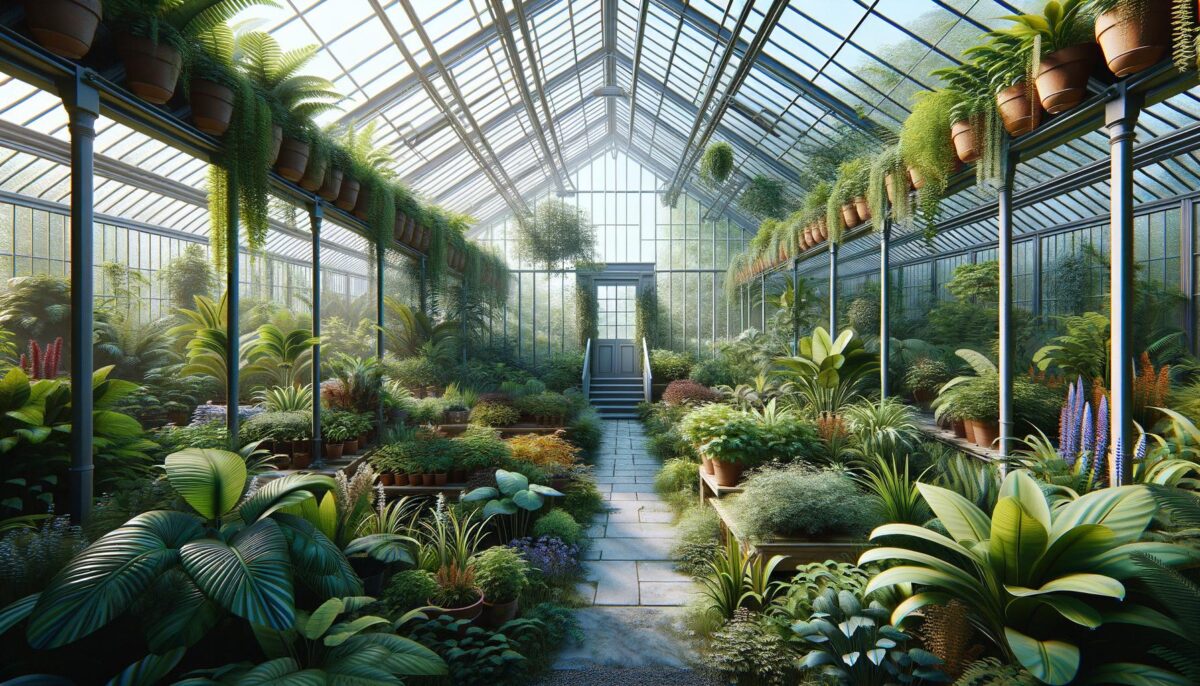The Rise of Polycarbonate Greenhouses
In recent years, polycarbonate greenhouses have become quite popular among gardening enthusiasts. These structures offer numerous advantages over traditional glass greenhouses, primarily due to their durability and insulation properties. Among many greenhouse types, the polycarbonate variety stands out for its ability to keep plants safe from harsh weather conditions while allowing ample sunlight to penetrate. A key factor to consider when selecting a greenhouse is the material used for its construction, and in this regard, polycarbonate has proven itself to be one of the top options.
Strength and Durability
One of the compelling reasons gardeners choose polycarbonate over glass is its remarkable strength and endurance. Polycarbonate panels are highly resistant to impact, making them an excellent choice for areas prone to volatile weather such as hailstorms. Glass is prone to shattering under such conditions, but polycarbonate is capable of withstanding these forces. This ensures that your plants remain protected and your investment in the structure is long-lasting.
- Impact-resistant, reducing the risk of damage
- Resilient against diverse weather conditions
- Longer life span compared to standard glass
These features make polycarbonate an exceptional choice for gardeners looking for a reliable greenhouse.
Insulating Capabilities
When it comes to providing a conducive environment for plant growth, insulating your greenhouse effectively is crucial. Polycarbonate panels excel in insulation due to their multi-layered construction, which traps air between layers. This design minimizes heat loss during colder months, ensuring a warm environment for your plants. Coupled with a strategic ventilation system, this property can significantly enhance plant growth. Here are some benefits of polycarbonate’s insulating qualities:
- Maintains a consistent internal temperature
- Enhances plant growth by optimizing conditions
- Reduces heating costs in winter
These attributes show why polycarbonate is among the best materials to use for effective insulation in greenhouses.
Light Transmission and UV Protection
Light is a vital component for plant growth, and polycarbonate panels are designed to maximize sunlight transmission. Unlike glass, which can sometimes overexpose plants to direct sunlight causing burns, polycarbonate provides a diffused light environment. This allows even the most delicate plants to thrive without suffering from excessive light exposure. Additionally, most polycarbonate materials offer UV protection, shielding your plants from harmful rays.
- Maximizes sunlight penetration
- Prevents plant burns from direct sunlight
- Offers protection from harmful UV rays
These features demonstrate how polycarbonate panels are ideal for balancing light and protection in greenhouses.
Cost Efficiency and Sustainability
When considering the sustainability and cost-efficiency of a greenhouse, polycarbonate panels offer several advantages. While the initial cost of polycarbonate may be higher compared to other materials like plastic film, its durability and low maintenance requirements provide savings in the long run. Moreover, polycarbonate is recyclable, making it an environmentally friendly option for environmentally conscious gardeners. The longer lifespan and reduced need for repairs further contribute to its cost effectiveness.
- Long-term financial savings due to durability
- Low maintenance costs
- Recyclable materials promote sustainability
These aspects make polycarbonate a highly rated choice for budget-conscious and eco-friendly gardeners.
Conclusion: Embracing Polycarbonate Greenhouses
In summary, polycarbonate greenhouses offer a plethora of benefits that cater to both the practical and aesthetic needs of gardeners. From exceptional durability and outstanding insulating capabilities to its cost efficiency and sustainability, polycarbonate is a renowned choice for greenhouse construction. For anyone looking to enhance their gardening experience, considering a polycarbonate greenhouse could be a game-changing decision, providing not only a protective haven for plants but also peace of mind for the gardener.
